Do you want to grow your business? Is it time to rethink the way you market and deliver experiences?
To explore how to grow your business via innovation, I interview Duncan Wardle on the Social Media Marketing Podcast.
Duncan is the former head of innovation & creativity for Disney. He's also a keynote speaker who delivers workshops on design thinking and innovation.
Duncan explains why the way you're marketing needs to change. He shares three ways to make changes that lead to growth and how to ask “What if…?” questions that reveal the keys to valuable innovation.
Listen to the Podcast Now
This article is sourced from the Social Media Marketing Podcast, a top marketing podcast. Listen or subscribe below.
Where to subscribe: Apple Podcasts | Spotify | YouTube Music | YouTube | Amazon Music | RSS
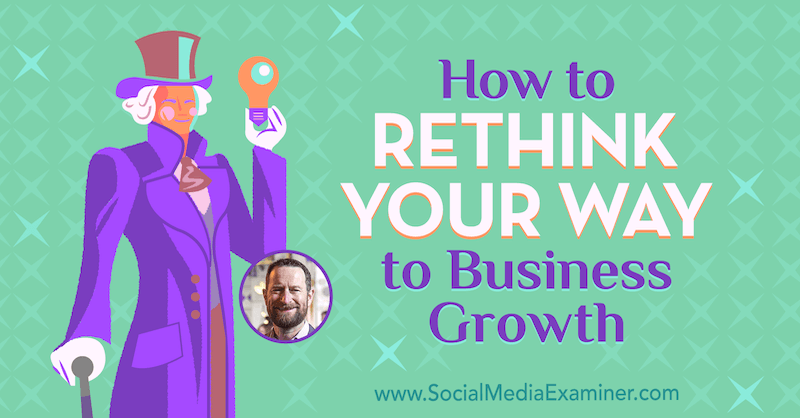
Innovation That Leads to Business Growth
Duncan's career with Disney began behind the bar at the Rose & Crown Pub in Epcot Center in 1986. He then transferred to Disney's 16-person London office (it's now got 3,500 employees), where he mainly fetched cappuccinos and collated press kits.
His first big assignment was at the 1988 world premiere of Who Framed Roger Rabbit? where his job was simply to stand at the bottom of the stairs and make sure Roger didn't hurt himself on the way down. With about six steps to go, Roger tripped over himself and went hurtling through the air directly toward Diana, Princess of Wales, whereupon two royal protection officers took poor Roger out in midair.
Duncan assumed he'd been fired and didn't go to work the next day. His boss countered that this was exactly the sort of publicity they needed for the movie. Thus began Duncan's 20-year career in public relations—which he describes as having big ideas even if he didn't have the money to support them—and at Disney—if he had a big idea, the funding would come.
Duncan loved working with former CEO Michael Eisner because every time he was presented with a big idea, Eisner would say, “Not big enough. We're the world's number-one entertainment company. Come back when you've got something else to talk about.”
Duncan appreciated that challenge and took it on wholeheartedly. Ideas successfully executed include getting NASA to take a Buzz Lightyear toy into space for the launch of Toy Story Mania! and arranging for Michael Phelps to swim down Main Street, U.S.A. at Disneyland after his 2004 Olympic Gold win.
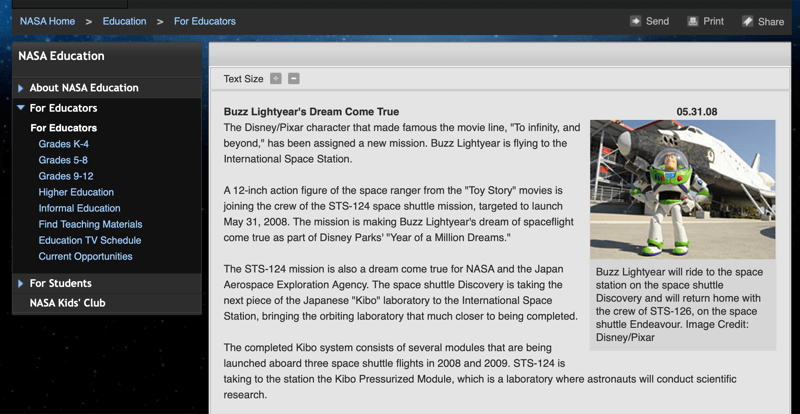
Duncan spent 13 years in that role until he got a call from the chairman declaring he'd been tapped to head up innovation. Duncan didn't exactly know what that meant. Neither did the chairman; he just knew they needed more of it.
Get World-Class Marketing Training — All Year Long!
Are you facing doubt, uncertainty, or overwhelm? The Social Media Marketing Society can help.
Each month, you’ll receive training from trusted marketing experts, covering everything from AI to organic social marketing. When you join, you’ll also get immediate access to:
- A library of 100+ marketing trainings
- A community of like-minded marketers
- Monthly online community meetups
- Relevant news and trends updates
The first thing Duncan did was to survey 5,000 employees at Marvel, Lucas Films, Pixar, and Disney Imagineering about their barriers to being more innovative and creative at work.
Their top responses were a lack of time to think; risk aversion (because there were quarterly results to meet); underuse of consumer insights; the fact that ideas often got stuck, diluted, or killed throughout the administrative process; and finally, that everyone had a different definition of innovation so they were all heading in different directions.
Why Customer-Centric Innovation Matters
If you ask a business if they're a product-centric or consumer-centric brand, most will say they're consumer-centric. But if you ask them if they've ever spent a day in the living room of one of their consumers, very few can put their hand up.
From 1920–2020, quarterly results on Wall Street dominated the way we do business. Now, we need to ask if we care more about quarterly results or our consumers. It's all well and fine for businesses to invest in artificial intelligence, blockchain, and data—but who's watching Generation Z, a generation that cares more about purpose than profit? Generation Z not only won't buy your products and services if they don't believe in what you stand for, they also won't want to work for you.
Duncan was asked to give a talk to the world's largest tool manufacturer about purpose. After hanging out in the aisles of Home Depot and Lowe's, he came back and told the tool manufacturer, “This generation hasn't heard of your brand. At that decision-making purchase moment, they're not talking about your brand, the individual products, or even price point. They're talking about what's important to them, not you: remodeling their dream kitchen or building their dream house. Your purpose, if you choose to create one, is to become the brand that helps people build their dreams.”
There's a big transition coming. We're moving from a marketing economy to an experience economy.
3 Pathways to Innovation and Business Growth
Marketing implies “at,” which is a one-way relationship—and one-way relationships don't work.
Today's consumers don't want to be marketed at. But on Instagram, every third image in the Instagram feed is content somebody produced to disrupt the consumer's experience—to market at them. Consumers may have a neutral position on your brand before that disruption, but after the disruption they don't like your brand at all because your marketing content disrupted their experience.
That's why Social Media Marketing World is so successful. It's built on creating experiences for and with attendees, not marketing “at” people.
When Walt Disney opened Disneyland on July 17, 1955, he started what continues to be the most successful retail shopping mall on the planet per square foot. Nobody thinks of Disneyland as a shopping mall; we think of it as an experience. Airbnb is an experience. The Museum of Ice Cream is an experience. We don't go to Starbucks for the coffee; we go for the experience.
And so marketing is now about rejuvenating brands by creating those experiences. There are three key ways you can go about creating that experience:
Re-Engineer the Industry Rules
When Walt Disney created Fantasia, he wanted mist to fall inside the theater during the scene with rain. He wanted heat pumped in during the scene of “Night on Bald Mountain.” Theater owners complained that this would all be too expensive. So Walt listed all the rules of his industry as they stood at that moment.
He was frustrated that he couldn't control how his consumers experienced his brand. So he said, “What if I controlled the movie theaters?” But that's not innovation. He said, “What if I take my movies out of the theater?” You're not supposed to know how to do it. If you know how to do it, that's iteration, not innovation.
He said, “Well, if I take my movies out of the theater, what if I made them three-dimensional? If I made them three-dimensional, I'd need people to play the characters. If I have people play the characters, Cinderella couldn't live next to Jasper and Davy Crockett because people wouldn't be immersed in her story. I'd have to put her in a different land… I'll call it Disneyland.” This was one of the greatest-ever re-engineerings of a consumer experience.
Reinvent the Consumer Experience
Marketers tend to rely heavily on data. If you're relying solely on your big data, you're only looking where your competition is looking—and data can only go so far. But by being curious and acting like a child, and asking why, you can go beyond that data.
If you ask people why they go to a Disney park, they'll tell you that they go for the rides. That's a capital investment strategy. Duncan says it's about continuing to ask why: “Why do you go for the rides?” “Well, I like ‘It's a Small World.'” “Why do you like ‘It's a Small World'?” “I remember the music.” “Why is that important to you?” “It reminds me of my mum.” “Why is that significant?” “I take my daughter now.”
That fifth question reveals the real reason that consumer goes to Disney: It's not for the new attractions, it's because of memory and nostalgia. That's a communication campaign, not a capital investment strategy.
Duncan was tasked with getting more people to come to the theme park and to spend more money. Data told them who could afford the Disney brand: who'd been before, who'd been shopping online, who'd visited the Disney Store, who was surveyed and said they planned to come that year. And then they didn't come. Clearly, the data was missing something. So the innovation team decided to reinvent their relationship with the consumer.
Duncan isn't a great fan of focus groups because they're artificial, uncomfortable environments. He says to truly get consumer insights, we need to observe consumers in their own living rooms. They're far more relaxed than they are in a focus group and it's not just what they tell you—it's what you see.
Duncan and his team went to live with 26 consumers for a day. In all 26 households, every single time they asked how old the family's children were, they were anywhere from 2–22 years older than they were in the photographs that were displayed around the home. Duncan's team knew there was something there that data had missed, and decided to dig a little deeper.
Parents want their children in that little photo frame back. When a parent walks in the door at night, they're still Superman or Wonder Woman to their small child. Those are the best days of a parent's life and they're gone so quickly. Duncan and his team dug a bit deeper and found three bittersweet transitions that take place between a parent and a child, when as you cross through them, you instantly want to step back.
Duncan remembers where he was the day his son asked him, “Are you Santa Claus?” In that split second, imagination, creativity, Batman, Superman, were all gone. But what hurt so much was his son saying, “I'm not your little boy anymore, Daddy. I'm growing up.” Duncan also knows exactly where he was the day his daughter dropped his hand for the first time in public because she didn't want people to see her hold Daddy's hand anymore—he even remembers that it was his left hand. It's a seminal moment between a father and a daughter.
What Duncan and his team realized by spending time with families and getting out of their data was that parents don't wake up in the morning worrying about whether Disney has new attractions this year. Parents wake up every morning worried about how quickly their children are growing up and how they want to make special memories for them while they still believe, while they still hold their hands, while they're still there.
This realization led to a three-way targeted communication campaign that drove sales—not intent to visit—up 20% and turned a very product-centric, “we know better” culture into a consumer-centric culture. Now, it's mandatory for Disney executives to work 1 or 2 days a year as frontline cast members in the Disney theme parks and to spend a day each year in their consumers' homes.
Re-Express the Challenge
As marketers, we're all charged with ROI and driving revenue. But if Disney had merely asked how to make more money in 2011, they'd have simply increased the gate prices at the Disney theme parks by 3%. People would have complained but they'd have still come, and Disney would have met their quarterly results.
Instead, Disney reversed the question and asked how they might solve their consumers' biggest pain points. They then used that same “what if” tool that Walt used all those years ago.
They listed the rules of going to Disney parks and came up with things like: people have to buy a plane ticket, rent a car, stay in a hotel room, go to watch the 3 o'clock parade, meet Mickey Mouse, go on Big Thunder Mountain, stand in line, etc. So Disney thought, “What if there were no lines? What if we eliminated the front desk in our hotels? The turnstiles at the front of the park where you wait 20 minutes to get in? The lines to pay for merchandise, including beverages, and to get on your favorite attractions?”
RFID technology had already existed for 5 years. Disney put the tech in a wristband and called it Disney's MagicBand. If you're staying in a Walt Disney World resort hotel today, the band arrives at your house before you leave. It's your room key and your theme park ticket. There's no turnstile at the front of the park—you just swipe the band and go.
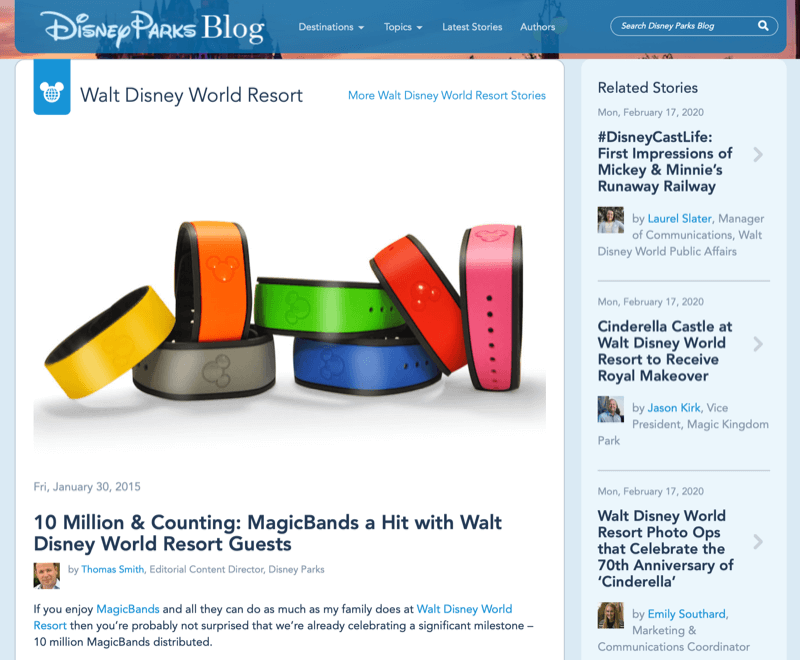
The band has your reservations for your favorite character meet-and-greets and your favorite rides each day, and if you want merchandise, you touch it and it is delivered to your hotel room. If you want a hot dog with pickles on the side, and you're going to Pinocchio's Village House for lunch, you save the order on your phone, and when you walk into the restaurant, you touch the table, and the food comes fresh to you.
Because Disney expressed the challenge as how they might solve their biggest consumer pain points, the average guest now has between 1.5 and 2 hours of free time each day in the park that they didn't have before, which has resulted in record revenues—because people spend money when they have spare time. What's more, by simply touching and telling Disney what they like and what they don't, customers wearing that same RFID technology are now essentially crowdsourcing the future design of every product and service Disney creates for its parks.

Discover Proven Marketing Strategies and Tips
Want to go even deeper with your marketing? Check out the Social Media Marketing Podcast! Publishing weekly since 2012, the Social Media Marketing Podcast helps you navigate the constantly changing marketing jungle, with expert interviews from marketing pros.
But don’t let the name fool you. This show is about a lot more than just social media marketing. With over 600 episodes and millions of downloads each year, this show has been a trusted source for marketers for well over a decade.
By re-engineering the experience and breaking the rules of the industry, by reinventing the relationship with the consumer by actually meeting one, and by re-expressing the challenge and not asking the same question every year, you can create great experiences.
You'll not only survive, you'll thrive in the experience economy because Generation Z is coming and they want experiences. They're seeking individualized, personalized, customized experiences. The challenge for a lot of big brands is that they've been built on being consistent for 100 years. But this next generation doesn't want that.
Embracing Customer-Centric Innovation
Over a decade ago, Duncan asked Disneyland, “What if we stop producing our marketing content and let the consumer do it for us?” Disneyland's Instagram account is now completely curated consumer content. Disney doesn't produce any.
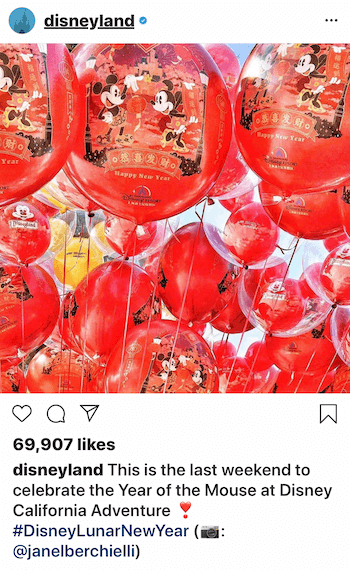
Smaller organizations with smaller marketing teams have always assumed that they had to create their own content. Well, how many consumers have you got? Even if only a small percentage, your most passionate advocates, do this on your behalf, how much more reach will you have? More importantly, how much more credibility?
Disney can advertise at you and tell you to come to Walt Disney World with a 2-year-old child and you're going to say, “No, I want to wait until John is the right age.” But if you see a photograph of your best friend with little Sarah, who's the same age as John, enjoying the park, the work is done. Lean into consumer behavior and challenge whether the marketing you're doing needs to change with the times.
Ask Naïve Experts for Out-of-the-Box Insight
The biggest barrier to innovation is our own experience. It gets in the way.
Duncan's team was charged with coming up with a new retail, dining, and entertainment complex for Hong Kong Disneyland. He had 12 white male American architects over 50 years of age in the room. That's called groupthink. Duncan likes to bring what he calls a naïve expert into every session he runs. The naïve expert could even be a consumer.
Because they don't work for him and don't work in his industry, they'll ask the silly question that everyone else is too embarrassed to ask in front of their peers. They'll throw out the audacious ideas ungoverned by industry hierarchy, politics, turf, and approval processes. They won't solve the issue. They'll simply get you out of the river of thinking and help you think differently.
Duncan tasked each member of the team with drawing a simple picture of a house in 7 seconds. They all drew basically the same thing because they all went to the river of thinking of all their shared experience and expertise.
Duncan's naïve expert in this situation was Chinese, not American; female, not male; younger than 30, not older than 50; and a chef, not an architect. She drew dim sum architecture, which none of them had ever seen before. It looks like the round bamboo dish that your dim sum comes in. With that drawing, she gave the group permission to think differently, and consider audacious architecture.
If any company in the world could consider audacious architecture, it would be the Walt Disney Company. On the way out the door, somebody slapped a Post-It note on her drawing that said, “Distinctly Disney, authentically Chinese.” Seven years later, the strategic brand position that guided everything, including the design of the resort in Shanghai, was ‘Distinctly Disney, Authentically Chinese'.
Another time, Duncan had a meeting with senior executives to discuss how they might make more money. Duncan's naïve expert was Mildred, a 78-year-old woman who worked in the call center. She spoke to the company's guests for 8 hours a day; the executives didn't. So who do you think knew more about what the guests wanted?
Duncan asked Mildred what she liked and disliked about her job. He discovered that she was frustrated by her boss's “Guest Request, Don't Suggest” policy, which stated that if there was an online offer and the guest didn't suggest it first, Mildred wasn't allowed to. Mildred felt this policy lost trust with customers. She speculated that she could book more of her callers if she weren't restricted by this policy.
Duncan went off to meet the head of strategy for Mildred's department, who claimed that this “Guest Request, Don't Suggest” policy was worth millions of dollars a year in incremental revenue. Mildred was taken out of that policy for 6 weeks to see how she performed. In those 6 weeks, Mildred's average went from 1 out of every 20 calls booked to 4 out of every 20, and Disney made a lot more money.
Most people don't understand the power of diversity. They think it just means political correctness and quotas, and they don't give it its due. Diversity is innovation. If somebody looks different from you, they think differently from you, and if they think differently from you, they can help you think differently. It makes for a much more innovative organization than a group of people who all look—and think—the same.
Ask Provocative Questions
The founder of Netflix listed all of the rules of going to Blockbuster: I must “be kind and rewind.” I can rent three at a time. They never have the one I want on opening day. I have to drive to a physical store. I need a membership card. I must pay late fees.
The founder of Netflix said, “What if there was no physical store?” That was an absurd suggestion in 2005. But YouTube had existed for a long time before Netflix. YouTube, at the time, was only streaming amateur content.
He said, “What if I only stream professional content? I'll do a deal with all of the movie studios. Nobody would have to drive anywhere. Everyone would get the movie they wanted on opening day weekend. I'll be open 24 hours a day, 7 days a week. I'll cut the rental off at the end of 24 hours. Nobody pays a late fee. I'll take my idea to Blockbuster Video five times, they'll turn me down five times. I'll take him out of business in less than 5 years.”
It's easy to look at Netflix and Disney and say, “But I'm a small business.” But, innovation isn't about money. It's about having a clear, simple idea.
A small drinking glass company in Nottingham in Great Britain in the 1970s had only 84 employees. They noticed there was too much breakage as the glasses were being wrapped and shipped and that production wasn't fast enough.
They went down to the shop floor which consisted of 26 employees, a conveyor belt, and cardboard boxes to investigate. Employees packed 12 glasses to a box, each separated by corrugated cardboard and wrapped in newspaper—but the employees were reading the newspaper. There was their pain point.
So somebody asked the relatively provocative question, “What if we poke their eyes out?” Well, that's against the law and it's not very nice. But because they had the courage to ask the provocative question, they got out of their river of thinking. Instead they asked, “Why don't we just hire blind people?” So they did.
Production went up more than 20%, breakage went down more than 70%, and the British government handed them a 50% salary subsidy for hiring people with disabilities.
Getting Started With “What If…” Questions
Start with the rules of your industry.
Let's say you're in the movie theater business. What are the rules of that industry? Rule number one, you have to buy a ticket. Rule number two, you have to sit down. Rule number three, it's dark. Rule number four, you can't use your phone. Rule number five, you have to sit behind a man with a big head. Rule number six, you can't participate in the movie. What if you could participate in the movie? What if we could do crowdsourced theater, which would enable people to choose the villain, choose the costumes… What if you could participate?
We've been able to buy music off of Instagram for the last decade and we can buy straight out of people's Instagram posts today. Why couldn't we create a movie where every single thing in it is for sale? The car, the blouse, the skirt, the desk. As people see it, they can buy it straight off of the screen and have it sent to their home. Why not? Why hasn't somebody already done that?
Movie theaters today make their money from you buying a ticket but what if it was free? If people could buy products off of the screens and product placement, but it was done subtly and creatively within the movie, theater owners could make enough revenue from the advertisers that there wouldn't need to be a charge to get in.
Duncan doesn't actually think movie theaters have long to live. They've always said that with each new technological advance, they'd still survive—when TV came along, video, DVDs, and now streaming. But here's what's happened: It's not about technology; it's a culture shift.
When we were kids, we went out to the park to play and kick a ball around together, and we got emotional satisfaction from going out with our friends to a movie theater, a restaurant, a sports arena, or a concert. Duncan's son—on the odd occasion he sees him in the 17-second sprint between his bedroom and opening the door for the UberEats driver—can play with all of his friends from within his own bedroom. He doesn't have to go anywhere. It's a different world.
The NBA created some virtual teams last year because they think virtual basketball revenue will eventually exceed real basketball revenue. Could virtual basketball actually be in the Olympic games? Possibly. But when the virtual Orlando Magic team played against the virtual New York Knicks live in Madison Square Garden, they got a whole lot more fans showing up than would show for a regular game.
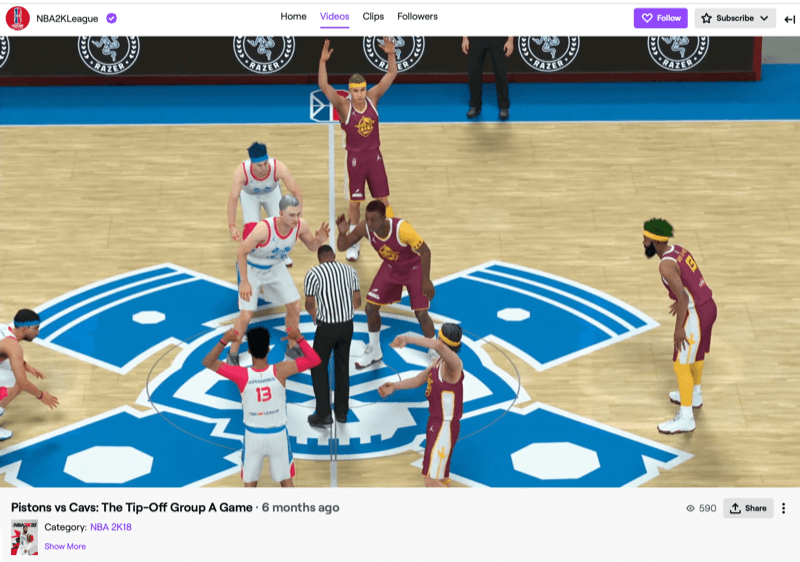
Getting Buy-in on “What If…” Innovation
Duncan and I played a little role-playing game. The first time around, he threw ideas at me and had me start each response with the words, “No, because,” and provide a reason that we shouldn't be doing the idea. Duncan does this exercise with lots of people and asks them at the end if the idea got bigger or smaller; generally they say that it got smaller.
We did the brainstorming exercise again—but this time, I had to respond with the words, “Yes, and,” and we built the idea together. When groups do this version of the exercise, Duncan says the energy level in the room goes up 100%. Laughter goes up 100%. If you ask them if the idea got bigger or smaller, they'll all say bigger. From this second exercise, the idea belonged to everyone who participated.
The moment you can transfer from “my idea” to “our idea” is the moment you can accelerate its opportunity for realization. Your boss has more experience than you, more expertise than you, and more years in the industry than you. They know 20,000 reasons why your new idea won't work and they'll constantly shut it down. If the first two words out of a leader's mouth are, “No, because…” people won't likely come back to them with a new idea.
Leaders have to remind themselves, even if they're at a small company with a set budget, the idea doesn't have to be green-lit for execution today. It can simply be green-housed. Using just those two little words from the world of improv—”Yes, and…”—ideas get bigger, not smaller. You can always take a big idea and value-engineer it down. You can't take a small, bad idea and turn it into a big one.
But far more importantly, inside big organizations with layers and approval levels and everything else, simply by saying, “Yes, and…” the idea moves from “mine” to “ours,” and it receives a much better shot at actually getting done.
People ask Duncan why he left Disney after being head of innovation & creativity and being with the company for 13 years. It's because he realized that there's a massive gap in the market. Every single C-suite executive is standing up and saying, “We must innovate. We must take risks. We must disrupt. I challenge you to be brave and think differently.” And all of their employees are sitting there thinking, “That's great. Can you show me how?” And nobody's doing the “how.”
Duncan realized all he needed to do was to create an innovation toolkit that makes innovation easy, creativity tangible, and fun. But you can't change a culture by talking about it. You have to give people a toolkit they want to use when you're not around.
Key Takeaways From This Episode:
- Find out more about Duncan on his website.
- Follow Duncan on Twitter.
- Check out Social Media Marketing World 2020.
- Watch exclusive content and original videos from Social Media Examiner on YouTube.
- Watch our weekly Social Media Marketing Talk Show on Fridays at 10 AM Pacific on Crowdcast.
Help Us Spread the Word! Please let your Twitter followers know about this podcast. Simply click here now to post a tweet.
If you enjoyed this episode of the Social Media Marketing podcast, please head over to iTunes, leave a rating, write a review, and subscribe. And if you listen on Stitcher, please click here to rate and review this show.
What do you think? What are your thoughts on how to grow your business through innovation? Please share your comments below.
Attention Agency Owners, Brand Marketers, and Consultants

Introducing the Marketing Agency Show–our newest podcast designed to explore the struggles of agency marketers.
Join show host and agency owner, Brooke Sellas, as she interviews agency marketers and digs deep into their biggest challenges. Explore topics like navigating rough economic times, leveraging AI, service diversification, client acquisition, and much more.
Just pull up your favorite podcast app, search for Marketing Agency Show and start listening. Or click the button below for more information.

